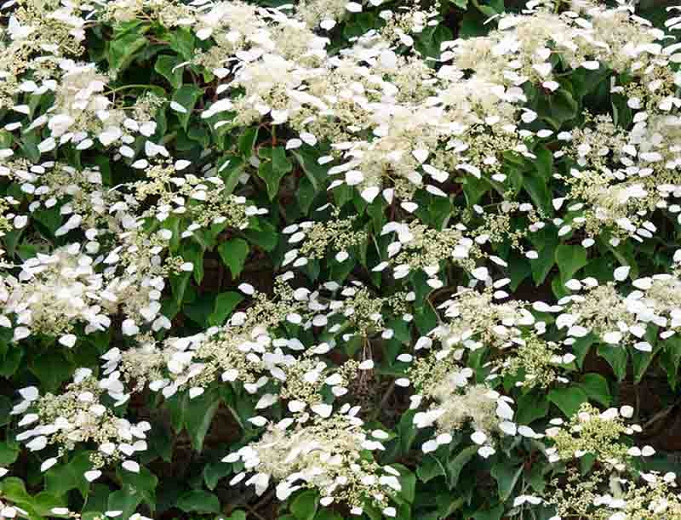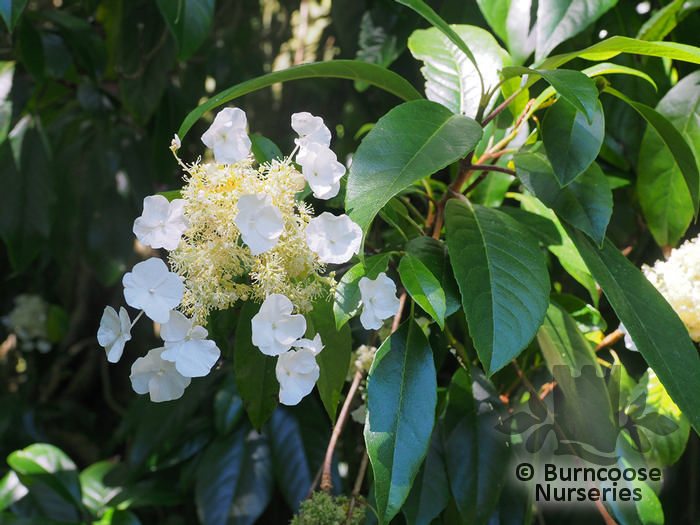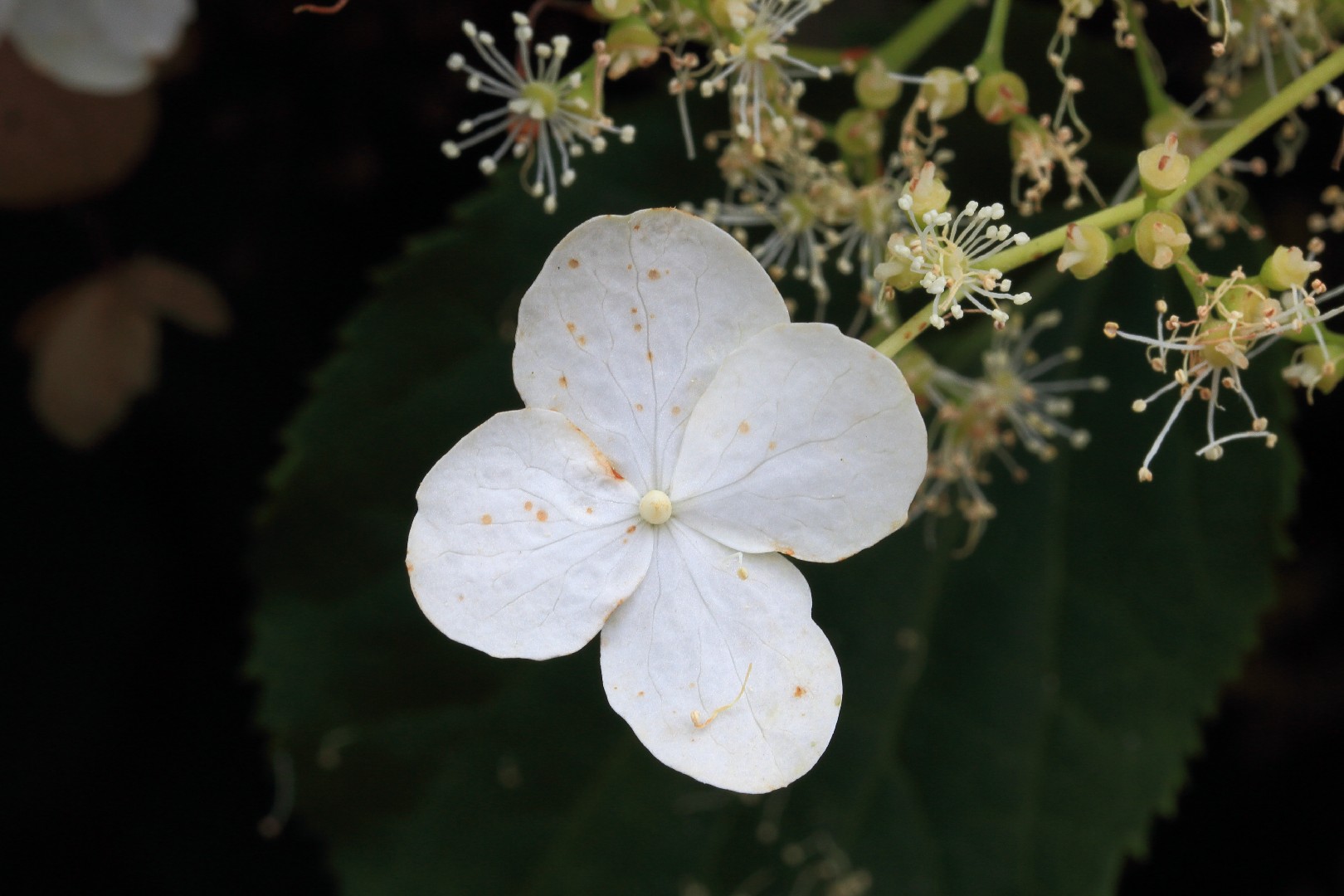The Climbing Hydrangea That Will
Climbing hydrangeas are a beautiful and versatile plant that can add a touch of elegance to any garden. They are relatively easy to care for and can grow in a variety of conditions, making them a good choice for gardeners of all skill levels.
In this blog post, we will discuss the different types of climbing hydrangeas, how to choose the right one for your garden, and how to care for it. We will also provide some tips on how to train your climbing hydrangea to climb a wall or fence.
Types of Climbing Hydrangeas
There are three main types of climbing hydrangeas:
- Hydrangea anomala subsp. petiolaris is the most common type of climbing hydrangea. It is deciduous, meaning it loses its leaves in winter. It has white flowers that bloom in summer. This type of climbing hydrangea is hardy in zones 4-9.

- Hydrangea seemannii is an evergreen climbing hydrangea. It has greenish-white flowers that bloom in summer. This type of climbing hydrangea is hardy in zones 7-9.

- Hydrangea serratifolia is an evergreen climbing hydrangea. It has white flowers that bloom in summer. This type of climbing hydrangea is hardy in zones 8-9.

How to Choose the Right Climbing Hydrangea for Your Garden
When choosing a climbing hydrangea for your garden, there are a few factors you need to consider:
- Hardiness zone: Make sure to choose a type of climbing hydrangea that is hardy in your climate zone.
- Sun exposure: Climbing hydrangeas can tolerate a range of sun exposures, but they will flower best in partial shade.
- Soil type: Climbing hydrangeas prefer moist, well-drained soil.
- Size: Climbing hydrangeas can grow quite large, so be sure to choose a variety that will fit in the space you have available.
How to Care for Climbing Hydrangeas
Climbing hydrangeas are relatively easy to care for. Here are a few tips:
- Water regularly: Climbing hydrangeas need moist soil, so water them deeply and regularly, especially during hot, dry weather.
- Fertilize in spring: Fertilize your climbing hydrangea in spring with a balanced fertilizer.
- Prune in late winter or early spring: Prune your climbing hydrangea in late winter or early spring to remove dead or damaged branches and to shape the plant.
- Protect from pests and diseases: Climbing hydrangeas are susceptible to a few pests and diseases, such as aphids, scale, and powdery mildew. If you see any signs of pests or diseases, treat them immediately.
How to Train Your Climbing Hydrangea to Climb
If you want your climbing hydrangea to climb a wall or fence, you will need to train it. Here are a few tips:
- Choose a sturdy wall or fence: Make sure the wall or fence you choose is sturdy enough to support the weight of the climbing hydrangea.
- Secure the plant: Use wire or plant ties to secure the climbing hydrangea to the wall or fence.
- Guide the plant: As the climbing hydrangea grows, guide it up the wall or fence.
- Be patient: It may take a few years for your climbing hydrangea to fully cover the wall or fence.
Conclusion
Climbing hydrangeas are a beautiful and versatile plant that can add a touch of elegance to any garden. They are relatively easy to care for and can grow in a variety of conditions, making them a good choice for gardeners of all skill levels.
If you are looking for a climbing plant that is both beautiful and easy to care for, a climbing hydrangea is a great option. With a little care and attention, your climbing hydrangea will thrive and provide you with years of enjoyment.
If you're looking for a beautiful and easy-to-care-for climbing plant, look no further than the hydrangea anomala subsp. petiolaris, also known as the climbing hydrangea. This vigorous vine can grow up to 30 feet long and produces masses of fragrant white flowers in late spring to early summer. The flowers are held in flattened clusters that can be up to 8 inches across. The leaves are heart-shaped and dark green, and they turn a brilliant shade of yellow in the fall.
Climbing hydrangeas are relatively low-maintenance plants. They prefer part shade to full shade and moist, well-drained soil. They are not as cold-hardy as some other types of hydrangeas, but they can typically withstand temperatures down to -20 degrees Fahrenheit.
If you're interested in learning more about climbing hydrangeas, I recommend visiting . This website has a wealth of information about the plant, including its care requirements, propagation methods, and pest and disease control. You can also find photos of climbing hydrangeas in bloom, as well as tips on how to choose the right plant for your garden.
FAQ of hydrangea anomala subsp petiolaris
- What is Hydrangea anomala subsp. petiolaris?
Hydrangea anomala subsp. petiolaris, also known as climbing hydrangea, is a deciduous vine that can grow up to 50 feet long. It is native to Japan and Korea, and is now widely cultivated in temperate regions around the world. Climbing hydrangea is known for its beautiful white or pink flowers, which bloom in late spring and early summer. It is a relatively easy plant to grow, and is tolerant of a wide range of soil conditions.
- How quickly does climbing hydrangea grow?
Climbing hydrangea grows relatively quickly, and can reach a mature height of 50 feet in just 10-15 years. However, it is important to note that the first few years of growth may be slow.
- Does climbing hydrangea need support?
Yes, climbing hydrangea does need support. It will not climb on its own, and will need to be trained to grow up a trellis, fence, or other structure.
- What are the best conditions for growing climbing hydrangea?
Climbing hydrangea prefers full sun to partial shade, and moist, well-drained soil. It is tolerant of a wide range of pH levels, but does best in slightly acidic soil.
- How do I care for climbing hydrangea?
Climbing hydrangea is relatively easy to care for. Water it regularly, especially during the first few years of growth. Fertilize it in the spring with a balanced fertilizer. Prune it in the early spring to remove dead or damaged branches.
Image of hydrangea anomala subsp petiolaris
5 different images of "hydrangea anomala subsp petiolaris" from Pinterest:
- Image 1: A climbing hydrangea plant with white flowers growing on a tree.

- Image 2: A close-up of the white flowers of a climbing hydrangea plant.

- Image 3: A climbing hydrangea plant with yellow fall foliage.
- Image 4: A climbing hydrangea plant with its exfoliating bark in winter.

- Image 5: A group of climbing hydrangea plants growing on a wall.

Post a Comment for "The Climbing Hydrangea That Will"